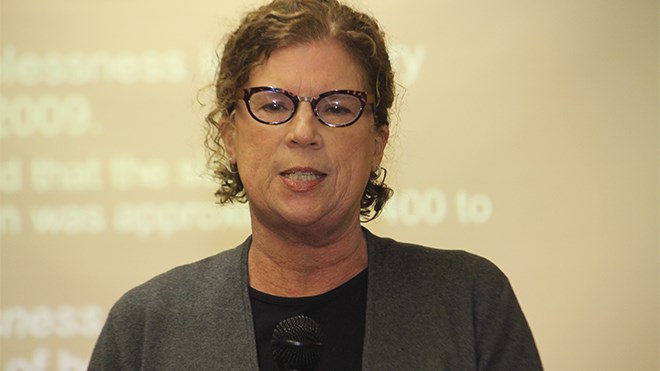Greater Sudbury's homeless population has more than doubled since 2009, according to the latest numbers from a groundbreaking study meant to examine homelessness in the city.
From Jan. 28, to Feb. 3, 2015, Laurentian University's project on Poverty, Homelessness and Migration in Northern Ontario worked with 34 agencies, programs and frontline services in Greater Sudbury to count the city's homeless population and outline the root causes of homelessness.
The study found 1,540 people in Greater Sudbury were either homeless, or at risk of becoming homeless during the period.
Around 30 per cent of those counted – 455 people – were absolutely homeless, while the remaining 1,085 people lived in precarious situations and were at risk of becoming homeless.
Carol Kauppi, the project's director and lead researcher for the study, said 182 of the people counted were dependent children under the age of 18.
“The numbers in Sudbury, North Bay and Timmins are higher than the rest of Canada,” Kauppi said.
In fact, nearly one per cent of Greater Sudbury's population is represented in the study, and in Timmins, the number reaches nearly 1.7 per cent of the population.
In comparison, a study in 2012 found around 0.3 per cent of Vancouver's population is homeless, or at risk of becoming homeless, and in Toronto a 2009 study pegged the number at 0.2 per cent of the city's population.
But Kauppi said most other studies only counted their city's homeless population over the course of a day, instead of a week, as has been done in the northeast.
She said Laurentian's numbers are more robust, because only one day of counting makes it possible to miss a lot of people who would only access social services certain days of the week.
While indigenous people represent around 8.2 per cent of Greater Sudbury's population, they represented around 43 per cent of the homeless or at-risk population, the study found.
Francophones, however, represent 28.6 per cent of Greater Sudbury's population, but only 14 per cent of the homeless, or at risk population.
More than half the people counted in the study had physical or mental health problems.
Thirty-five per cent of Sudbury's homeless, or at-risk population had migrated to the city within the last five years. Most migrated from other parts of Northern Ontario or the province.
When asked what they needed to improve their situations, most respondents in the study said more affordable housing should be a priority.
“We need more affordable housing to be made available so people don't have to live through these experiences of vulnerability to losing their housing, or being absolutely homeless,” Kauppi said.
Other issues raised were a lack of sufficient financial support from various government agencies, and difficulty finding employment.
“The income support programs we have in place, like Ontario Works and the Ontario Disabilities Support Program, are inadequate for people to pay their rent, food and other basics,” Kauppi said.
The City of Greater Sudbury plans to use the study's findings to help inform its own approach to homelessness.
Join Sudbury.com+
- Messages
- Post a Listing
- Your Listings
- Your Profile
- Your Subscriptions
- Your Likes
- Your Business
- Support Local News
- Payment History
Sudbury.com+ members
Already a +member?
Not a +member?
Sign up for a Sudbury.com+ account for instant access to upcoming contests, local offers, auctions and so much more.
